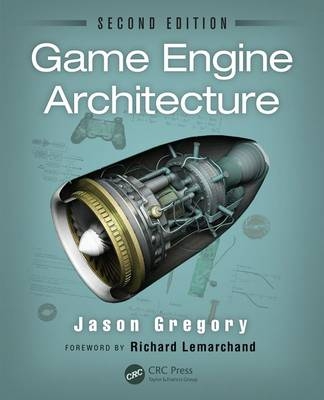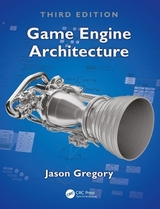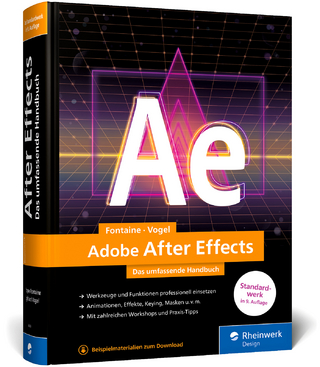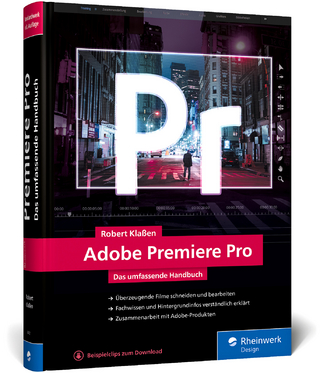
Game Engine Architecture
A K Peters (Verlag)
978-1-4665-6001-7 (ISBN)
- Titel erscheint in neuer Auflage
- Artikel merken
New to the Second Edition
Information on new topics, including the latest variant of the C++ programming language, C++11, and the architecture of the eighth generation of gaming consoles, the Xbox One and PlayStation 4
New chapter on audio technology covering the fundamentals of the physics, mathematics, and technology that go into creating an AAA game audio engine
Updated sections on multicore programming, pipelined CPU architecture and optimization, localization, pseudovectors and Grassman algebra, dual quaternions, SIMD vector math, memory alignment, and anti-aliasing
Insight into the making of Naughty Dog’s latest hit, The Last of Us
The book presents the theory underlying various subsystems that comprise a commercial game engine as well as the data structures, algorithms, and software interfaces that are typically used to implement them. It primarily focuses on the engine itself, including a host of low-level foundation systems, the rendering engine, the collision system, the physics simulation, character animation, and audio. An in-depth discussion on the "gameplay foundation layer" delves into the game’s object model, world editor, event system, and scripting system. The text also touches on some aspects of gameplay programming, including player mechanics, cameras, and AI.
An awareness-building tool and a jumping-off point for further learning, Game Engine Architecture, Second Edition gives readers a solid understanding of both the theory and common practices employed within each of the engineering disciplines covered. The book will help readers on their journey through this fascinating and multifaceted field.
Foundations
Introduction
Structure of a Typical Game Team
What Is a Game?
What Is a Game Engine?
Engine Differences across Genres
Game Engine Survey
Runtime Engine Architecture
Tools and the Asset Pipeline
Tools of the Trade
Version Control
Microsoft Visual Studio
Profiling Tools
Memory Leak and Corruption Detection
Other Tools
Fundamentals of Software Engineering for Games
C++ Review and Best Practices
Data, Code and Memory
Catching and Handling Errors
Pipelines, Caches and Optimization
3D Math for Games
Solving 3D Problems in 2D
Points and Vectors
Matrices
Quaternions
Comparison of Rotational Representations
Other Useful Mathematical Objects
Hardware-Accelerated SIMD Math
Random Number Generation
Low-Level Engine Systems
Engine Support Systems
Subsystem Start-Up and Shut-Down
Memory Management
Containers
Strings
Engine Configuration
Resources and the File System
File System
The Resource Manager
The Game Loop and Real-Time Simulation
The Rendering Loop
The Game Loop
Game Loop Architectural Styles
Abstract Timelines
Measuring and Dealing with Time
Multiprocessor Game Loops
Networked Multiplayer Game Loops
Human Interface Devices (HID)
Types of Human Interface Devices
Interfacing with a HID
Types of Inputs
Types of Outputs
Game Engine HID Systems
Human Interface Devices in Practice
Tools for Debugging and Development
Logging and Tracing
Debug Drawing Facilities
In-Game Menus
In-Game Console
Debug Cameras and Pausing the Game
Cheats
Screenshots and Movie Capture
In-Game Profiling
In-Game Memory Stats and Leak Detection
Graphics, Motion and Sound
The Rendering Engine
Foundations of Depth-Buffered Triangle Rasterization
The Rendering Pipeline
Advanced Lighting and Global Illumination
Visual Effects and Overlays
Further Reading
Animation Systems
Types of Character Animation
Skeletons
Poses
Clips
Skinning and Matrix Palette Generation
Animation Blending
Post-Processing
Compression Techniques
Animation System Architecture
The Animation Pipeline
Action State Machines
Animation Controllers
Collision and Rigid Body Dynamics
Do You Want Physics in Your Game?
Collision/Physics Middleware
The Collision Detection System
Rigid Body Dynamics
Integrating a Physics Engine into Your Game
Advanced Physics Features
Audio
The Physics of Sound
The Mathematics of Sound
The Technology of Sound
Rendering Audio in 3D
Audio Engine Architecture
Game-Specific Audio Features
Gameplay
Introduction to Gameplay Systems
Anatomy of a Game World
Implementing Dynamic Elements: Game Objects
Data-Driven Game Engines
The Game World Editor
Runtime Gameplay Foundation Systems
Components of the Gameplay Foundation System
Runtime Object Model Architectures
World Chunk Data Formats
Loading and Streaming Game Worlds
Object References and World Queries
Updating Game Objects in Real Time
Events and Message-Passing
Scripting
High-Level Game Flow
Conclusion
You Mean There’s More?
Some Engine Systems We Didn’t Cover
Gameplay Systems
Bibliography
Index
| Zusatzinfo | 12-page color insert, 24 figures follows page; 413 Tables, black and white; 7 Illustrations, black and white |
|---|---|
| Verlagsort | Natick |
| Sprache | englisch |
| Maße | 191 x 235 mm |
| Gewicht | 1769 g |
| Themenwelt | Informatik ► Grafik / Design ► Film- / Video-Bearbeitung |
| Informatik ► Software Entwicklung ► Spieleprogrammierung | |
| ISBN-10 | 1-4665-6001-0 / 1466560010 |
| ISBN-13 | 978-1-4665-6001-7 / 9781466560017 |
| Zustand | Neuware |
| Informationen gemäß Produktsicherheitsverordnung (GPSR) | |
| Haben Sie eine Frage zum Produkt? |
aus dem Bereich



